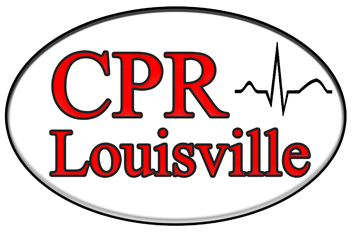Example of a Microbiology Unknown Lab Report by Taylor Autry
Introduction
In this paper I will discuss the processes of how I came to find my two unknown bacteria. This will be a vital task to take with me into my profession for many reasons. In the medical field bacteria and infections of different kinds are the core of the practice. These bacteria must be able to be identified in order to treat patients properly, efficiently and safely.
Materials and Methods:
The unknown number 123 handed out by the Professor on March 20, 2014 contained both a gram positive bacteria and a gram negative bacteria. At this point everything that had been learned in microbiology lab and that had been explained in our lab manual (1) was put into action. The first step to figuring out the unknowns, was to separate the two bacteria. In order to do this, a nutrient agar plate was used. The streak method was used to spread the bacteria across the nutrient agar in hopes of isolating a pure culture of one of the bacteria. In order to do the streak method, an inoculating loop was sterilized with a Bunsen burner and put into the unknown specimen. After removal with bacteria on the loop, the quadrant streak method was used. The streak plate was then incubated at 37 degrees Celsius for 48 hours. Upon returning and observing the streak plate, there was an abundance of green across the plate. There was only one colony that was apparent. After observation, a sample was taken from the isolated colony on the streak plate and another streak plate was done with that, trying to further isolate the colonies. As well as using the quadrant method to further isolate the colonies, a sample was taken from the best colony on the original streak and gram stained. The gram stain procedure was performed as directed in the lab manual (1). The gram stain showed a result of red, gram negative rods. To decipher between which biochemical tests to perform, the gram positive and negative tables handed out by the Professor, were referred to. From previous biochemical tests done in the semester, Pseudomonas aeruginosa was already suspected because of the green pigment of the original streak plate. Upon reviewing the identification tables, the deciding biochemical test was the Casein test which tests for the production of the enzyme casease to break down the milk protein casein. The milk agar was incubated at 37 degrees Celsius for 48 hours. After observation there was a clear positive result, which showed the bacteria produced casease. After confirming the gram negative bacteria, the process of isolating the gram positive bacteria began. Returning to the original unknown stock 123, a quadrant streak plate was done with a sterilized inoculating look on a mannitol salt agar, which inhibits the growth of gram negative bacteria. This MSA plate was incubated at 37 degrees Celsius for 48 hours. Upon return and observation, the MSA did not yield a good isolated colony. Professor Snaric advised to do another MSA agar from the original stock, but this time with a sterile swab instead of an inoculating loop. This test was also incubated at 37 degrees Celsius for 48 hours and returned a good isolated colony. A sample was taken from this colony and transferred to a nutrient broth agar to further isolate it. After incubation, this nutrient agar had great results with many isolated colonies. A sample was taken from the isolated nutrient agar and a gram stain was done as directed by the lab manual (1). The gram stain showed clear purple gram positive cocci. After getting a good gram stain the identification tables were referred to in order to choose between appropriate biochemical tests.
A nitrate test was performed in order to detect if the bacteria was able to reduce nitrate into nitrate or some further reduced form. Then a urea test was performed to check for the production of urease. All of the biochemical tests performed were explained, in the lab manual provided by Professor (1) and were practiced earlier in the semester. Tables 1 and 2 lists the tests, purposes, reagents used and the results of each test.
The following tests were performed on the Gram Negative bacteria:
- Casein
See Table 1 for results
The Following Tests were performed on the Gram Positive bacteria:
- Nitrate
- Urea
See Table 2 for results.
Results
The first test performed on the gram negative bacteria, was a Casein Test. This test gave a positive result turning a brown color, meaning the gram negative bacteria produced the enzyme casease in order to break down the milk protein casein. This was the only test necessary to determine the unknown gram negative bacteria in unknown stock 123.
Table 1: Tests and Results for Gram Negative Bacteria
| Test | Purpose | Reagents or Media | Observations | Results |
| Gram Stain | To determine whether the bacteria was gram negative or gram positive | Crystal violet, Iodine, Alcohol, Safranin | Red Rods | Gram Negative bacteria |
| Casein | To determine if the enzyme casease was produced to break down the milk enzyme casein | Milk Agar
(white opaque) |
Milk Agar changed color where bacteria was smeared, turning a brown color | Positive, the bacteria produced casease |
The first test performed on the gram positive bacteria was the Nitrate Test which turned red after adding reagents giving a positive result meaning the bacteria reduced nitrate into nitrite or something further. Following the nitrate test was the Urea Test to determine if the bacteria produced urease. This gave a positive result showing a hot pink broth, meaning the bacteria did produce urease.
Table 2: Tests and Results for Gram Positive Bacteria
| Test | Purpose | Reagents or Media | Observations | Results |
| Gram Stain | To determine if the bacteria was gram negative or gram positive | Crystal violet, Iodine, Alcohol, Safranin | Purple coccus | Gram Positive Cocci |
| Nitrate | To determine if the bacteria reduced nitrogen to some further reduced form such as nitrite | Nitrate Reagents A & B, Zinc | When reagents A & B were added the broth turned red | Postive, the bacteria reduced the nitrate into nitrite or some further form of nitrogen |
| Urea | To determine if the bacteria produced the enzyme urease | Urea Broth
(yellow) |
Broth turned a hot pink color | Positive, the bacteria produced the enzyme urease |
Discussion/Conclusion
The unknown #123 contained two different specimen of bacteria, one being a gram positive bacteria and one being a gram negative bacteria. The first unknown in #123 found to be a gram negative bacteria, was identified as Pseudomonas aeruginosa. This identification was reached by only one biochemical test and close observation. A gram stain was done originally and found red rods identifying the bacteria as gram negative. The streak plate that was originally done, showed a heavy green pigment, which is a main characteristic of Pseudomonas auruginosa. The next test performed was a Casein Test which showed a clear positive result. The only gram negative bacteria that shows a positive result on the Casein Test is Pseudomonas aeruginosa, therefore correctly confirming the unknown gram negative bacteria.
The second unknown bacteria was identified as a gram positive bacteria with a coccus shape. This immediately ruled two of the gram positive bacteria Bacillus cerus and Bacillus subtilis. This left three bacteria that the second unknown could be Staphylococcus aureus, Staphylococcus epidermidis, or Enterococcus faecalis. The next test performed was a Nitrate Test which gave a positive result. The two bacteria that give a positive result for this test are Staphylococcus aureus and Staphylococcus epidermidis. The second test performed was a Urea Test which also gave a clear positive result confirming that unknown gram positive bacteria as Staphylococcus epidermidis because Staphylococcus aureus gives a negative result. Consultation with the Professor, confirmed the two unknown bacteria correctly as Pseudomonas aeruginosa and Staphylococcus epidermidis. The only problem that was encountered appeared when trying to isolate the gram positive bacteria. The gram negative bacteria in unknown #123 is a very aggressive bacteria that makes the growth of a gram positive bacteria difficult. Even on an MSA agar, it took a few tries and several isolations to get the gram positive to successfully grow. After successful isolation of both bacteria, there were no more issues encountered in identifying either.
Pseudomonas aeruginosa is a gram negative rod shaped bacteria that was first discovered in 1882 by a pharmacists named Carle Gessard (2). His study picked up on the unique blue-green pigmentation of P. aeruginosa. This bacteria can catalyze in many environments which makes it very common and found almost everywhere such as soil, water, humans, plants, sewage and hospitals. P. aeruginosa is what is called an opportunistic human pathogen, because it rarely affects a healthy individual. This bacteria more so affects individuals with compromised immune systems the most common being those with cystic fibrosis, cancer, or AIDS. (2) This particular bacteria is so dangerous and pathogenic that it infects up to two thirds of critically ill patients in the hospital and is a leading pathogen in most medical centers with a mortality rate of 40-60% (2). It is most dangerous to cystic fibrosis patients and is involved and complicates 90% of cystic fibrosis deaths. It builds resistance against a lot of antibiotics and even chemotherapeutic agents. “P. aeruginosa is a facultative aerobe; its preferred metabolism is respiration.” (MicrobeWiki) People that are most at risk for infection of P. aeruginosa are those in hospital settings, especially ones on breathing machines or with catheters (3). Although some cases have been caused by swimming in pools or hot tubs with incorrect levels of chlorine. To avoid the spread and contamination of P. aeruginosa nurses and health care professionals should be sure to use aseptic technique because the bacteria is mostly spread through contaminated equipment and professionals hands. P. aeruginosa is quickly on its way to becoming resistant to antibiotics and becoming increasingly difficult to treat. Selecting the correct antibiotic for this particular bacteria is especially important.
References:
- McDonald, Virginia, Mary Thoele, Bill Salsgiver, and Susie Gero. Lab Manual for General Microbiology. St Louis: St Louis Community College at Meramec, 2011. Print.
- “Pseudomonas Aeruginosa.” – MicrobeWiki. Kenyon College, 30 June 2006. Web. 23 Apr. 2014.
- “Health Care Associated Infections.” Centers for Disease Control and Prevention. Centers for Disease Control and Prevention, 02 Apr. 2013. Web. 22 Apr. 2014.





